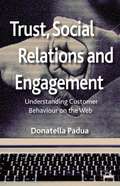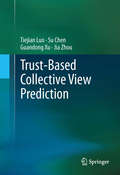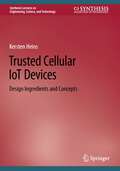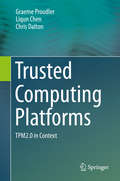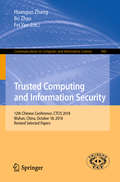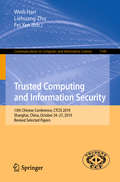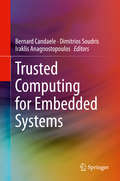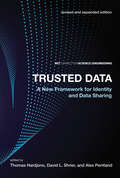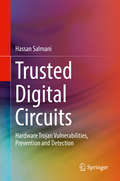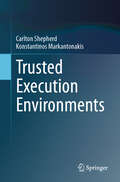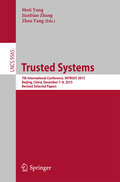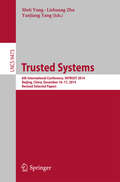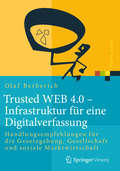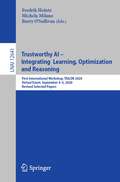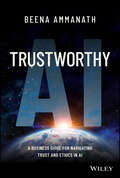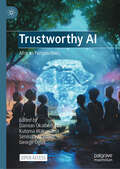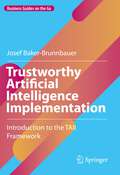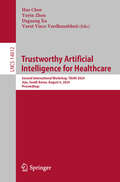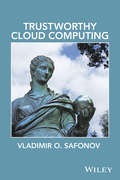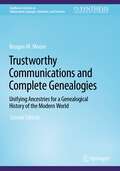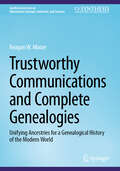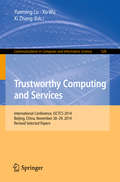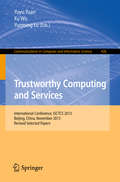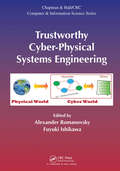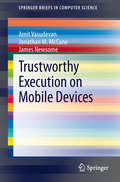- Table View
- List View
Trust, Social Relations and Engagement
by Donatella PaduaIn the Internet Age, horizontal value chains generated by peer-to-peer relationships have to be integrated in economic vertical processes. This means that all institutions, from the economical to the political, to the cultural or technological have to turn their approach into a 'social' one. This doesn't mean embracing a no-profit perspective: indeed it implies designing new trust and engagement strategies to generate positive win-win situations with stakeholders. Through the tools offered by sociology, a specific indication on how to build and measure value out of these strategies is offered by the 'Value for Engagement Model'. Behind the model, the innovative concept of Value for Engagement allows the definition of focused strategies to build value through achieving the stakeholders' commitment and activating emotional ties to the organisation. In this new role of 'pulling' stakeholders, the prerequisite is to be perceived as trustworthy.
Trust-based Collective View Prediction
by Su Chen Guandong Xu Jia Zhou Tiejian LuoCollective view prediction is to judge the opinions of an active web user based on unknown elements by referring to the collective mind of the whole community. Content-based recommendation and collaborative filtering are two mainstream collective view prediction techniques. They generate predictions by analyzing the text features of the target object or the similarity of users' past behaviors. Still, these techniques are vulnerable to the artificially-injected noise data, because they are not able to judge the reliability and credibility of the information sources. Trust-based Collective View Prediction describes new approaches for tackling this problem by utilizing users' trust relationships from the perspectives of fundamental theory, trust-based collective view prediction algorithms and real case studies. The book consists of two main parts - a theoretical foundation and an algorithmic study. The first part will review several basic concepts and methods related to collective view prediction, such as state-of-the-art recommender systems, sentimental analysis, collective view, trust management, the Relationship of Collective View and Trustworthy, and trust in collective view prediction. In the second part, the authors present their models and algorithms based on a quantitative analysis of more than 300 thousand users' data from popular product-reviewing websites. They also introduce two new trust-based prediction algorithms, one collaborative algorithm based on the second-order Markov random walk model, and one Bayesian fitting model for combining multiple predictors. The discussed concepts, developed algorithms, empirical results, evaluation methodologies and the robust analysis framework described in Trust-based Collective View Prediction will not only provide valuable insights and findings to related research communities and peers, but also showcase the great potential to encourage industries and business partners to integrate these techniques into new applications.
Trusted Cellular IoT Devices: Design Ingredients and Concepts (Synthesis Lectures on Engineering, Science, and Technology)
by Kersten HeinsThis book focuses on the impact of secure frontend devices for the Internet of Things (IoT). It explains how to identify vulnerabilities of IoT applications and how to protect them against misuse and attacks. Provided insights will help readers to design a reliable and trustworthy IoT ecosystem ensuring a high level of user confidence and a fruitful deployment. As a starting point, the book provides guidance how to identify risks and potential threats. Then, it explains which countermeasures are available and introduces all major ingredients for an efficient implementation of IoT security measures, e.g. a bullet-proof protection of user privacy and device identities. The author outlines an efficient design approach that combines classical embedded computing with smartcard technology and wireless cellular networking like LTE-M or NB-IoT. The target audience includes industrial professionals and students focusing on low cost design and a fast time-to-market. The book is ideal for engineering-minded IoT project owners to safeguard their business goals.
Trusted Computing Platforms
by Graeme Proudler Liqun Chen Chris DaltonIn this book the authors first describe the background of trusted platforms and trusted computing and speculate about the future. They then describe the technical features and architectures of trusted platforms from several different perspectives, finally explaining second-generation TPMs, including a technical description intended to supplement the Trusted Computing Group's TPM2 specifications. The intended audience is IT managers and engineers and graduate students in information security.
Trusted Computing and Information Security: 12th Chinese Conference, CTCIS 2018, Wuhan, China, October 18, 2018, Revised Selected Papers (Communications in Computer and Information Science #960)
by Bo Zhao Fei Yan Huanguo ZhangThis book constitutes the refereed proceedings of the Chinese Conference on Trusted Computing and Information Security, CTCIS 2018, held in Wuhan, China, in October 2018.The 24 revised full papers presented were carefully reviewed and selected from 73 submissions. The papers are centered around cryptography, systems security, trusted computing, information security, and network security.
Trusted Computing and Information Security: 13th Chinese Conference, CTCIS 2019, Shanghai, China, October 24–27, 2019, Revised Selected Papers (Communications in Computer and Information Science #1149)
by Liehuang Zhu Fei Yan Weili HanThis book constitutes the refereed proceedings of the Chinese Conference on Trusted Computing and Information Security, CTCIS 2019, held in Shanghai, China, in October 2019.The 22 revised full papers presented were carefully reviewed and selected from 247 submissions. The papers are centered around cryptography, systems security, trusted computing, information security, network security, information hiding.
Trusted Computing for Embedded Systems
by Dimitrios Soudris Bernard Candaele Iraklis AnagnostopoulosThis book describes the state-of-the-art in trusted computing for embedded systems. It shows how a variety of security and trusted computing problems are addressed currently and what solutions are expected to emerge in the coming years. The discussion focuses on attacks aimed at hardware and software for embedded systems, and the authors describe specific solutions to create security features. Case studies are used to present new techniques designed as industrial security solutions. Coverage includes development of tamper resistant hardware and firmware mechanisms for lightweight embedded devices, as well as those serving as security anchors for embedded platforms required by applications such as smart power grids, smart networked and home appliances, environmental and infrastructure sensor networks, etc. · Enables readers to address a variety of security threats to embedded hardware and software; · Describes design of secure wireless sensor networks, to address secure authentication of trusted portable devices for embedded systems; · Presents secure solutions for the design of smart-grid applications and their deployment in large-scale networked and systems.
Trusted Data, revised and expanded edition: A New Framework for Identity and Data Sharing
by Alex Pentland Thomas Hardjono David L. ShrierHow to create an Internet of Trusted Data in which insights from data can be extracted without collecting, holding, or revealing the underlying data.Trusted Data describes a data architecture that places humans and their societal values at the center of the discussion. By involving people from all parts of the ecosystem of information, this new approach allows us to realize the benefits of data-driven algorithmic decision making while minimizing the risks and unintended consequences. It proposes a software architecture and legal framework for an Internet of Trusted Data that provides safe, secure access for everyone and protects against bias, unfairness, and other unintended effects. This approach addresses issues of data privacy, security, ownership, and trust by allowing insights to be extracted from data held by different people, companies, or governments without collecting, holding, or revealing the underlying data. The software architecture, called Open Algorithms, or OPAL, sends algorithms to databases rather than copying or sharing data. The data is protected by existing firewalls; only encrypted results are shared. Data never leaves its repository. A higher security architecture, ENIGMA, built on OPAL, is fully encrypted.ContributorsMichiel Bakker, Yves-Alexandre de Montjoye, Daniel Greenwood, Thomas Hardjoni, Jake Kendall, Cameron Kerry, Bruno Lepri, Alexander Lipton, Takeo Nishikata, Alejandro Noriega-Campero, Nuria Oliver, Alex Pentland, David L. Shrier, Jacopo Staiano, Guy ZyskindAn MIT Connection Science and Engineering Book
Trusted Digital Circuits: Hardware Trojan Vulnerabilities, Prevention And Detection
by Hassan SalmaniThis book describes the integrated circuit supply chain flow and discusses security issues across the flow, which can undermine the trustworthiness of final design. The author discusses and analyzes the complexity of the flow, along with vulnerabilities of digital circuits to malicious modifications (i.e. hardware Trojans) at the register-transfer level, gate level and layout level. Various metrics are discussed to quantify circuit vulnerabilities to hardware Trojans at different levels. Readers are introduced to design techniques for preventing hardware Trojan insertion and to facilitate hardware Trojan detection. Trusted testing is also discussed, enabling design trustworthiness at different steps of the integrated circuit design flow. Coverage also includes hardware Trojans in mixed-signal circuits.
Trusted Execution Environments
by Konstantinos Markantonakis Carlton ShepherdTrusted execution environments (TEEs) protect sensitive code and data on computing platforms, even when the primary operating system is compromised. Once a technical curiosity, TEEs have rapidly become a key component in securing numerous systems from cloud servers to constrained devices. Today, TEEs have been deployed on billions of devices for protecting financial payments, personal files, copyrighted media content, and many others. Despite this, TEEs remain poorly understood due to their complexity and diversity. This book addresses this gap, providing a comprehensive treatment of different TEE technologies, their features, benefits, and shortcomings.A holistic view of secure and trusted execution is taken, examining smart cards and CPU protection rings before discussing modern TEEs, such as Intel SGX and ARM TrustZone. A wide range of paradigms for building secure and trusted execution environments are explored, from dedicated security chips to system-on-chip extensions and virtualisation technologies. The relevant industry standards and specifications are covered in detail, including how TEEs are evaluated and certified in practice with respect to security. Several case studies are presented showing how TEEs are used in some common security mechanisms, such as secure boot sequences, biometric authentication, and file-based encryption. This book also discusses present challenges in the field, covering potential attack vectors against TEEs and concerns relating to fragmentation, interoperability, and transparency. Lastly, a selection of future directions are examined that may be used by the trusted execution environments of tomorrow.This book is particularly targeted at practitioners and researchers in cyber security, such as penetration testers, security engineers, and security analysts. Additionally, this book serves as a valuable resource for university students, both postgraduate and advanced undergraduates, and professors in computer science and electrical engineering.
Trusted Systems
by Moti Yung Jianbiao Zhang Zhen YangThis book constitutes the thoroughly refereedpost-conference proceedings of the 7th International Conference on TrustedSystems, INTRUST 2015, held in Beijing, China, in December 2015. The revised 12 full papers presented have beencarefully reviewed and selected from 29 submissions. They are devoted to allaspects of trusted computing systems, including trusted modules, platforms;networks, services and applications. The papers are organized in the followingsections: encryptions and signatures; security model; trusted technologies;software and system security.
Trusted Systems
by Moti Yung Liehuang Zhu Yanjiang YangNormal 0 false false false EN-US X-NONE X-NONE This book constitutes the thoroughly refereedpost-conference proceedings of the 6th International Conference on TrustedSystems, INTRUST 2014, held in Beijing, China, in December 2014. The conference brings together academic and industrialresearchers, designers, and implementers with end-users of trusted systems, inorder to foster the exchange of ideas in this challenging and fruitful area. The revised full papers focus on the theory, technologies and applications oftrusted systems and cover all aspects of trusted computing systems, includingtrusted modules, platforms, networks, services and applications, from theirfundamental features and functionalities to design principles, architecture andimplementation technologies. /* Style Definitions */ table. MsoNormalTable {{mso-style-name:"Table Normal"; mso-tstyle-rowband-size:0; mso-tstyle-colband-size:0; mso-style-noshow:yes; mso-style-priority:99; mso-style-qformat:yes; mso-style-parent:""; mso-padding-alt:0in 5. 4pt 0in 5. 4pt; mso-para-margin:0in; mso-para-margin-bottom:. 0001pt; mso-pagination:widow-orphan; font-size:11. 0pt; font-family:"Calibri","sans-serif"; mso-ascii-font-family:Calibri; mso-ascii-theme-font:minor-latin; mso-fareast-font-family:"Times New Roman"; mso-fareast-theme-font:minor-fareast; mso-hansi-font-family:Calibri; mso-hansi-theme-font:minor-latin; mso-bidi-font-family:"Times New Roman"; mso-bidi-theme-font:minor-bidi;}}
Trusted WEB 4.0 – Infrastruktur für eine Digitalverfassung: Handlungsempfehlungen für die Gesetzgebung, Gesellschaft und soziale Marktwirtschaft (Xpert.press)
by Olaf BerberichDie totalitären Tendenzen des Internets sind unübersehbar. Wir steuern auf den gläsernen Menschen ohne Freiheitsrechte zu. Geschäftskonzepte weniger Global Player schalten Milliarden Menschen gleich. Die langfristigen Auswirkungen auf die Gesellschaft werden nicht bedacht. Der Autor zeigt konkret, wie die Demokratie nachhaltig in die digitale Gesellschaft übernommen werden kann. Die zukünftige Beherrschung der Menschen durch totalitäre globale Systeme und künstliche Intelligenzen wird ausgeschlossen.Alle Bürger und die regionale Wirtschaft werden in die digitale Wertschöpfungskette fair und leistungsangepasst eingebunden.
Trustworthy AI - Integrating Learning, Optimization and Reasoning: First International Workshop, TAILOR 2020, Virtual Event, September 4–5, 2020, Revised Selected Papers (Lecture Notes in Computer Science #12641)
by Michela Milano Barry O’Sullivan Fredrik HeintzThis book constitutes the thoroughly refereed conference proceedings of the First International Workshop on the Foundation of Trustworthy AI - Integrating Learning, Optimization and Reasoning, TAILOR 2020, held virtually in September 2020, associated with ECAI 2020, the 24th European Conference on Artificial Intelligence. The 11 revised full papers presented together with 6 short papers and 6 position papers were reviewed and selected from 52 submissions. The contributions address various issues for Trustworthiness, Learning, reasoning, and optimization, Deciding and Learning How to Act, AutoAI, and Reasoning and Learning in Social Contexts.
Trustworthy AI: A Business Guide for Navigating Trust and Ethics in AI
by Beena AmmanathAn essential resource on artificial intelligence ethics for business leaders In Trustworthy AI, award-winning executive Beena Ammanath offers a practical approach for enterprise leaders to manage business risk in a world where AI is everywhere by understanding the qualities of trustworthy AI and the essential considerations for its ethical use within the organization and in the marketplace. The author draws from her extensive experience across different industries and sectors in data, analytics and AI, the latest research and case studies, and the pressing questions and concerns business leaders have about the ethics of AI. Filled with deep insights and actionable steps for enabling trust across the entire AI lifecycle, the book presents: In-depth investigations of the key characteristics of trustworthy AI, including transparency, fairness, reliability, privacy, safety, robustness, and more A close look at the potential pitfalls, challenges, and stakeholder concerns that impact trust in AI application Best practices, mechanisms, and governance considerations for embedding AI ethics in business processes and decision making Written to inform executives, managers, and other business leaders, Trustworthy AI breaks new ground as an essential resource for all organizations using AI.
Trustworthy AI: African Perspectives
by Damian Okaibedi Eke Kutoma Wakunuma Simisola Akintoye George OgohThis book is an Open Access Publication. The Guidelines for Trustworthy AI developed by the European Commission High-Level Expert Group on AI is a framework that has been developed to promote and achieve the trustworthiness of AI systems. It provides seven ethical principles that can be operationalised in socio-technical systems to realise responsible AI design and deployment. The content of this book is shaped around these principles. In chapter one, the concept of Human Agency and oversight will be described from the lens of a social-cultural understanding of Agency, Autonomy, and oversight including a debate on the place of human rights and power dynamics. Beyond the Trustworthy AI discourse, this book will appeal to the wider AI developers community, civil society, policymakers, ICT and the RRI community. It will also appeal to other subject areas within the Social Sciences and Humanities including; Law and Technology and Digital Culture.
Trustworthy Artificial Intelligence Implementation: Introduction to the TAII Framework (Business Guides on the Go)
by Josef Baker-BrunnbauerRapidly developing Artificial Intelligence (AI) systems hold tremendous potential to change various domains and exert considerable influence on societies and organizations alike. More than merely a technical discipline, AI requires interaction between various professions. Based on the results of fundamental literature and empirical research, this book addresses the management’s awareness of the ethical and moral aspects of AI. It seeks to fill a literature gap and offer the management guidance on tackling Trustworthy AI Implementation (TAII) while also considering ethical dependencies within the company. The TAII Framework introduced here pursues a holistic approach to identifying systemic ethical relationships within the company ecosystem and considers corporate values, business models, and common goods aspects like the Sustainable Development Goals and the Universal Declaration of Human Rights. Further, it provides guidance on the implementation of AI ethics in organisations without requiring a deeper background in philosophy and considers the social impacts outside of the software and data engineering setting. Depending on the respective legal context or area of application, the TAII Framework can be adapted and used with a range of regulations and ethical principles. This book can serve as a case study or self-review for c-level managers and students who are interested in this field. It also offers valuable guidelines and perspectives for policymakers looking to pursue an ethical approach to AI.
Trustworthy Artificial Intelligence for Healthcare: Second International Workshop, TAI4H 2024, Jeju, South Korea, August 4, 2024, Proceedings (Lecture Notes in Computer Science #14812)
by Daguang Xu Hao Chen Yuyin Zhou Varut Vince VardhanabhutiThis book constitutes the proceedings of Second International Workshop on Trustworthy Artificial Intelligence for Healthcare, TAI4H 2024, held in Jeju, South Korea, in August 2024, in conjunction with the International Joint Conference on Artificial Intelligence, IJCAI 2024. The 13 full papers included in this book were carefully reviewed and selected from 21 submissions. They focus on trustworthy artificial intelligence, healthcare, generalization, explainability, fairness, privacy, multi-modal fusion, foundation models.
Trustworthy Cloud Computing
by Vladimir O. SafonovIntroduces the topic of cloud computing with an emphasis on the trustworthiness of cloud computing systems and services This book describes the scientific basis of cloud computing, explaining the ideas, principles, and architectures of cloud computing as well the different types of clouds and the services they provide. The text reviews several cloud computing platforms, including Microsoft Azure, Amazon, Oracle, Google, HP, IBM, Salesforce, and Kaavo. The author addresses the problem of trustworthiness in cloud computing and provides methods to improve the security and privacy of cloud applications. The end-of-chapter exercises and supplementary material on the book's companion website will allow readers to grasp the introductory and advanced level concepts of cloud computing. Examines cloud computing platforms such as Microsoft Azure, Amazon, Oracle, Google, HP, IBM, Salesforce, and Kaavo Analyzes the use of aspect-oriented programming (AOP) for refactoring cloud services and improving the security and privacy of cloud applications Contains practical examples of cloud computing, test questions, and end-of-chapter exercises Includes presentations, examples of cloud projects and other teaching resources at the author's website (http://www.vladimirsafonov.org/cloud) Trustworthy Cloud Computing is written for advanced undergraduate and graduate students in computer science, data science, and computer engineering as well as software engineers, system architects, system managers, and software developers new to cloud computing.
Trustworthy Communications and Complete Genealogies: Unifying Ancestries for a Genealogical History of the Modern World (Synthesis Lectures on Information Concepts, Retrieval, and Services)
by Reagan W. MooreThis book discusses how a genealogical history of the modern world can be created by linking the Royal Families of Western Europeans database to Unifying Ancestry. This new edition extends the original analysis by including a coherence metric to evaluate the content of the Unifying Ancestry database, which is freely available online educational software within the CoreGen3 analysis workbench. The author discusses why common ancestors of the Royal Families of Western Europe comprise an optimal Unifying Ancestry experience and further illustrates this by using historically influential people as examples. Specifically, algorithms for validating the Unifying Ancestry are applied to a 330,000-person Research Genealogy and then used to link to historical royal descendants. Genealogical evaluation properties for consistency, correctness, closure, connectivity, completeness and coherence are demonstrated. These properties are applied to a Research Genealogy to generate a unifying ancestry for western Europeans. The unifying ancestry is then used to create a genealogical history of the modern world. All the analyses can be reproduced by readers using the Unifying Ancestry CoreGen3 program.
Trustworthy Communications and Complete Genealogies: Unifying Ancestries for a Genealogical History of the Modern World (Synthesis Lectures on Information Concepts, Retrieval, and Services)
by Reagan W. MooreThis book explains how all persons with Western European ancestry are related through a Unifying Ancestry. The author presents the knowledge metrics needed to derive the best representation for a Unifying Ancestry. The book uses example lineages to historically notable persons including relationships to U.S. Presidents, royal families, actors, and singers in order to demonstrate these points. This third edition is based upon expanded data, applying the algorithms to validate the Unifying Ancestry to a 348,844-person Research Genealogy. The author successfully demonstrates that a Unifying Ancestry with 38,533 persons is sufficient to identify familial relationships between Western Europeans.
Trustworthy Computing and Services
by Xi Zhang Xu Wu Yueming LuThis book constitutes the refereed proceedings of the International Standard Conference on Trustworthy Computing and Services, ISCTCS 2014, held in Beijing, China, in November 2014. The 51 revised full papers presented were carefully reviewed and selected from 279 submissions. The topics covered are architecture for trusted computing systems; trusted computing platform; trusted system building; network and protocol security; mobile network security; network survivability, other critical theories and standard systems; credible assessment; credible measurement and metrics; trusted systems; trusted networks; trusted mobile networks; trusted routing; trusted software; trusted operating systems; trusted storage; fault-tolerant computing and other key technologies; trusted e-commerce and e-government; trusted logistics; trusted internet of things; trusted cloud and other trusted services and applications.
Trustworthy Computing and Services
by Yuyu Yuan Xu Wu Yueming LuThis book constitutes the refereed proceedings of the International Standard Conference on Trustworthy Distributed Computing and Services, ISCTCS 2013, held in Beijing, China, in November 2013. The 49 revised full papers presented were carefully reviewed and selected from 267 papers. The topics covered are trustworthy infrastructure; security, survivability and fault tolerance; standards, evaluation and certification; trustworthiness of services.
Trustworthy Cyber-Physical Systems Engineering (Chapman & Hall/CRC Computer and Information Science Series #36)
by Fuyuki Ishikawa Alexander RomanovskyFrom the Foreword "Getting CPS dependability right is essential to forming a solid foundation for a world that increasingly depends on such systems. This book represents the cutting edge of what we know about rigorous ways to ensure that our CPS designs are trustworthy. I recommend it to anyone who wants to get a deep look at these concepts that will form a cornerstone for future CPS designs." --Phil Koopman, Carnegie Mellon University, Pittsburgh, Pennsylvania, USA Trustworthy Cyber-Physical Systems Engineering provides practitioners and researchers with a comprehensive introduction to the area of trustworthy Cyber Physical Systems (CPS) engineering. Topics in this book cover questions such as What does having a trustworthy CPS actually mean for something as pervasive as a global-scale CPS? How does CPS trustworthiness map onto existing knowledge, and where do we need to know more? How can we mathematically prove timeliness, correctness, and other essential properties for systems that may be adaptive and even self-healing? How can we better represent the physical reality underlying real-world numeric quantities in the computing system? How can we establish, reason about, and ensure trust between CPS components that are designed, installed, maintained, and operated by different organizations, and which may never have really been intended to work together? Featuring contributions from leading international experts, the book contains sixteen self-contained chapters that analyze the challenges in developing trustworthy CPS, and identify important issues in developing engineering methods for CPS. The book addresses various issues contributing to trustworthiness complemented by contributions on TCSP roadmapping, taxonomy, and standardization, as well as experience in deploying advanced system engineering methods in industry. Specific approaches to ensuring trustworthiness, namely, proof and refinement, are covered, as well as engineering methods for dealing with hybrid aspects.
Trustworthy Execution on Mobile Devices
by Amit Vasudevan James Newsome Jonathan M. MccuneThis brief considers the various stakeholders in today's mobile device ecosystem, and analyzes why widely-deployed hardware security primitives on mobile device platforms are inaccessible to application developers and end-users. Existing proposals are also evaluated for leveraging such primitives, and proves that they can indeed strengthen the security properties available to applications and users, without reducing the properties currently enjoyed by OEMs and network carriers. Finally, this brief makes recommendations for future research that may yield practical and deployable results.
